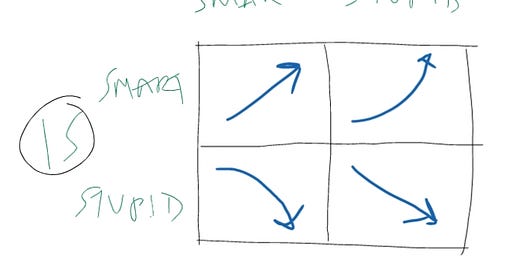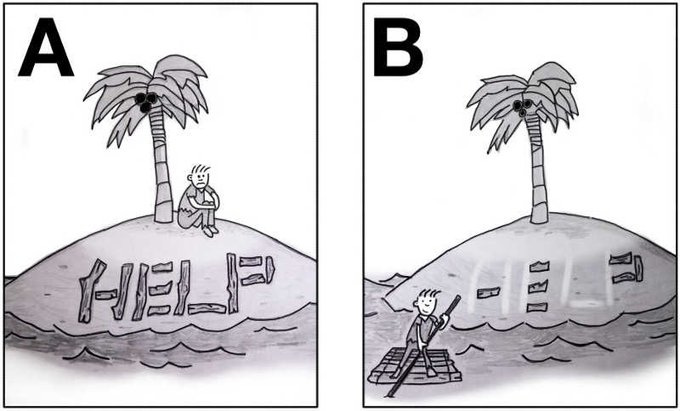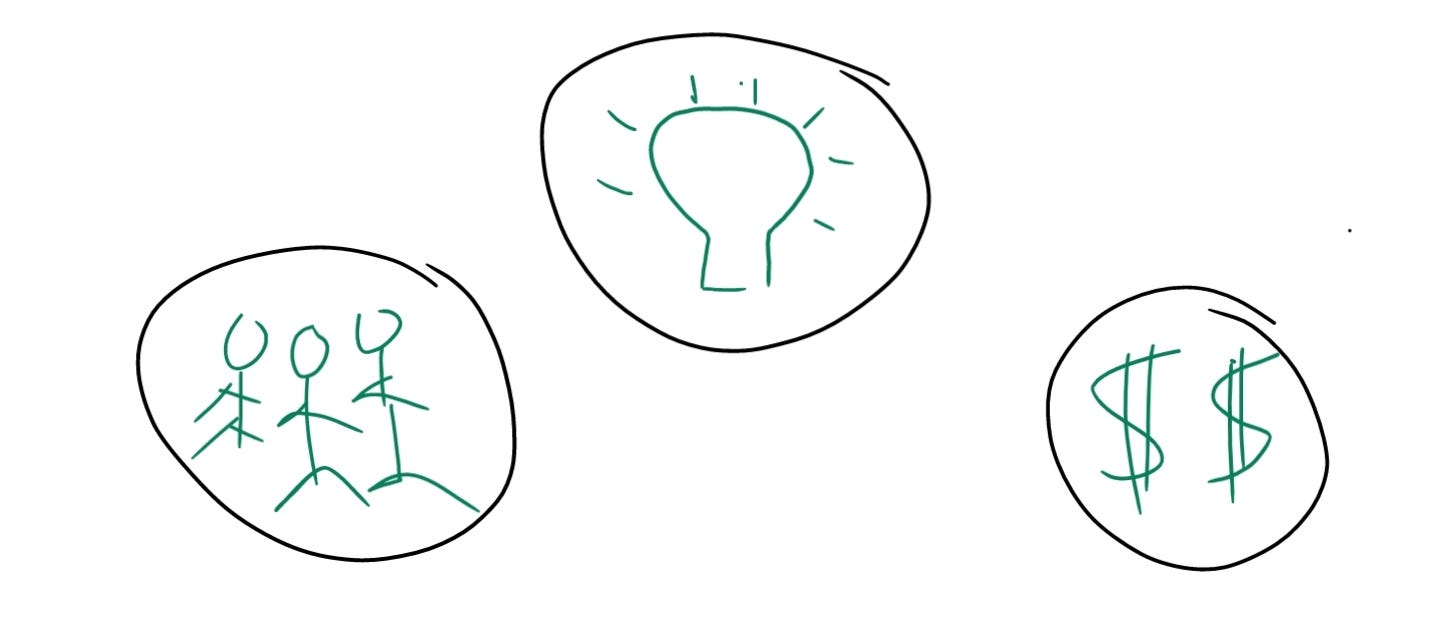Ways of categorising people at work
Some axes that help you hire, manage and work better with people
A lot of management ultimately boils down to how well you understand people. There are of course some set frameworks that help here - OCEAN, MBTI etc. But there are also some other useful ways of categorising people that are often not talked about:
Truth-seekers vs Truth-moulders
Some people want to better understand reality while some people have a vision in mind and want to bend reality to that vision. Bending reality here means selectively interpreting reality in the direction of the vision.
Jobs is famous for being in the latter camp, with his ‘reality distortion field’. The general wisdom is that the first bucket makes good investors, while the latter, good entrepreneurs. However, there are enough exceptions to this rule as well (E.g. Google).1
Nerds vs Athletes
Nerds often are interested in a thing for its own sake without caring about traditional definition of winning. Athletes care a lot about winning competitively. Another way to put this is that athletes care a lot about winning a game, whereas nerds care about playing the game.
Examples across the spectrum: Sergey and Larry were more on the nerd side initially, wanting to just create something better and sell it. So was Steve Woz. Bill Gates has often been regarded as a nerd, and truly so, but he was no less competitive than a master athlete.
Smart / Stupid 2x2
There are a lot of people who aren’t smart but create a perception of the same by learning jargon, emulating some successful habits etc. Needless to say, they should be avoided. More interestingly, there is a group of people which often looks stupid but is smart. You would have looked stupid if you would have said you’d compete with the top search engine which was already doing 1Bn$ revenue. And you would have looked stupid if you would have said strangers would want to host random people. But we all know the outcomes of both these statements. And while Google and Airbnb might be outlier examples, there’s still a bunch of people out there who look stupid but are actually smart. All exponential value will come from these people.
High Agency vs Low Agency
The key make or break in any team is the number of high agency people it has. High agency is about finding a way to get your wants, irrespective of circumstances. On the opposite end, low agency mindset is about complaining, finding blockers, making excuses etc.
If you add a talent axis to this, it becomes even more interesting.
Scarcity vs Abundance mindset
Ultimately, all form of long-term thinking boils down to some sort of abundance mindset. You don’t screw people because you believe you have larger games to play / your sacrifices will come back as rewards in some form.
At its deepest level, abundance mindset might just mean treating walls as hidden doors that can open with the right amount of searching and effort. While scarcity mindset looks at a wall, turns back and cannibalises people to fulfil their hunger.
I believe there’s a correlation between high agency and abundance mindset. Abundance mindset —> creative thinking and execution —> high agency.
Curious about people, tech or money
Curiosity about anything arises from what you think to be complex on an infinite time scale.
People who are curious about people more, fit better in roles like sales, managerial etc. People who are curious about technology fit better into engineering, academic sciences. People who are curious about money fit better into financial management roles.
The beauty about this process is that you can come up with such models of your own, based on your experiences, and tweak them based on real-world feedback. Ultimately, all management is understanding people first. And that craft requires its own set of tools to master :)
Also, It’s useful to consider this as a spectrum than a binary classification. Jobs wouldnt have been successful if he wasn’t rooted in the reality of consumers wanting a better mobile, music, PC experience. Similarly, some people may also transform from one side to another side of the spectrum, so these classifications aren’t perennial.
There are of course a lot of tools relevant for classifying people across non-work dimensions, that I’ve not discussed here.








